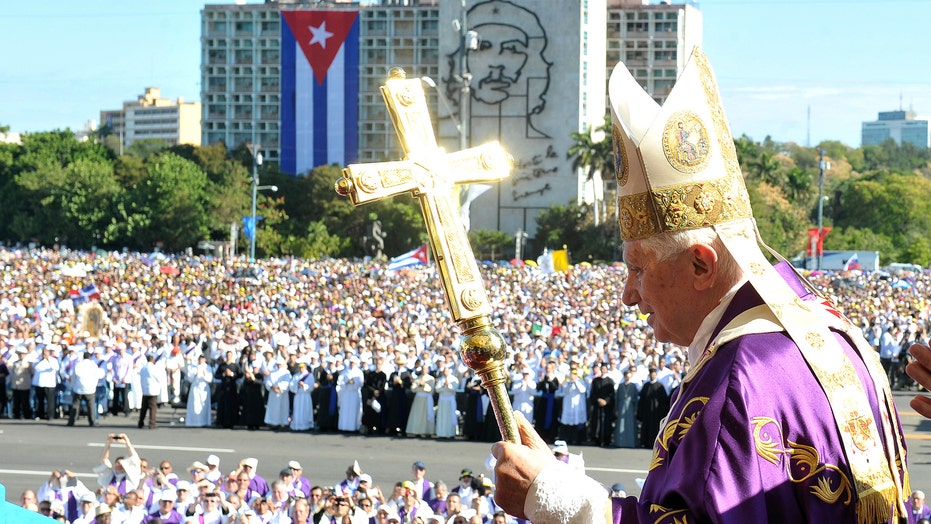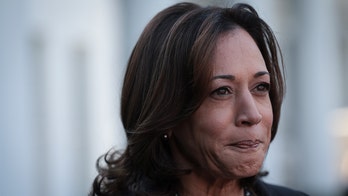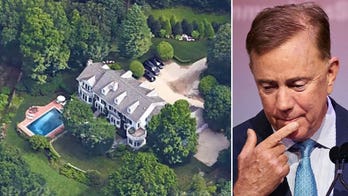HAVANA – Pope Benedict XVI is to wrap up his visit to Cuba on Wednesday with an open-air Mass in the shrine of the Cuban revolution. He is also expected to meet with Fidel Castro.
The meeting is to come as dissident groups claim that more than 150 political opponents of the Communist regime have been arrested in connection with the papal visit, and that more arrests are feared, according to the dissident group Cuban Commission for Human Rights and National Reconciliation.
A video of one vocal protestor yelling anti-government slogans and being subdued and hustled away was posted on YouTube and has become a viral sensation. The group communiqué added that some 200 Cubans critical of the regime "have been prohibited from attending the public Masses of Pope Benedict XVI."
Critics of the Castro government also have expressed disappointment that Pope Benedict XVI has not met with any of the human rights or dissident groups during his visit.
The "Ladies in White"-- relatives of imprisoned opponents of the regime -- tweeted this anxious plea: "@dmorca: Vatican: The #PopeCuba is aware of the opposition, but has no time to meet with them.”
Benedict's Mass in Revolution Plaza comes 14 years after John Paul preached on the same spot before hundreds of thousands of people.
Then, an image of Jesus Christ was displayed opposite the plaza's iconic image of revolutionary hero Ernesto "Che" Guevara, a remarkable development for a country that had been officially atheist until 1992.
What Happened to Cuba's Mystery Protester?
This time around, a huge poster of Cuba's patron saint, the Virgin of Charity of Cobre, covered the facade of one of the buildings facing the plaza near Che. The icon has been the spiritual focus of Benedict's three-day visit, timed to coincide with the 400th anniversary of the appearance of the diminutive statue.
Fidel Castro, the former Cuban leader and older brother of the current head of government, announced late Tuesday that he would happily meet with Benedict, saying he was asking for just a "few minutes of his very busy time" in Havana.
The Vatican had already said Benedict was available, so the confirmation from Castro was all that was needed to seal the appointment and end weeks of speculation as to whether Castro would repeat the meeting he held with Pope John Paul II during his historic 1998 visit.
"I will happily greet His Excellency Pope Benedict XVI as I did John Paul II, a man for whom contact with children and the humble raised feelings of affection," Castro wrote.
Benedict visited the statue in a sanctuary near the eastern city of Santiago on Tuesday morning and prayed to her for greater freedom and renewal for all Cubans — another gentle nudge to the government to continue opening itself up to greater reforms.
"I have entrusted to the Mother of God the future of your country, advancing along the ways of renewal and hope, for the greater good of all Cubans," the pope said. "I have also prayed to the Virgin for the needs of those who suffer, of those who are deprived of freedom, those who are separated from their loved ones or who are undergoing times of difficulty."
Dramatic Images of the Pope's Visit to Mexico and Cuba
During a nearly hour-long meeting Tuesday with Cuban President Raul Castro — twice the normal length of papal audiences with heads of state — Benedict asked that the government declare a holiday for Good Friday, when Catholics commemorate the death of Christ.
The request, like so much of this trip, was a follow-up of sorts to Cuba's decision to declare Christmas a national holiday in honor of John Paul's 1998 visit. Cubans hadn't had Christmas off for nearly 30 years.
"It's not that it changes reality in a revolutionary way, but it can be a sign of a positive step — as was the case of Christmas after John Paul's visit," said the Vatican spokesman, the Rev. Federico Lombardi.
The government didn't give an immediate response, but Lombardi said it was only natural for Cuba to take time to consider it. The government, which frequently declares holidays at the last minute, could make a quick gesture in honor of Benedict given that Good Friday this year falls in less than two weeks, on April 6.
Benedict also raised "humanitarian" issues with Raul Castro, an apparent reference to political prisoners. Lombardi said he didn't know if individual cases were discussed.
Primarily, though, Benedict came to Cuba to try to win a greater place in society for the Catholic Church, which has been marginalized in the six decades of Castro family rule.
The island's Communist government never outlawed religion, but it expelled priests and closed religious schools after Fidel Castro came to power in 1959. Tensions eased in the early 1990s when the government removed references to atheism in the constitution and let believers of all faiths join the Communist Party.
John Paul's 1998 visit further warmed relations. But despite years of lobbying, the church has virtually no access to state-run radio or television, is not allowed to administer schools and has not been granted permission to build new places of worship. Only about 10 percent of Cubans are practicing Catholics.
This article contains material drawn from The Associated Press and EFE.
Follow us on twitter.com/foxnewslatino
Like us at facebook.com/foxnewslatino





